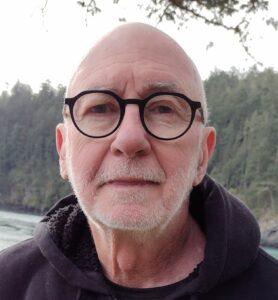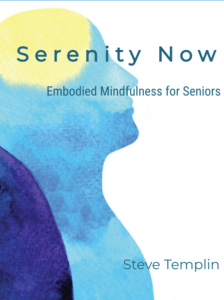A wise doctor said, “If the patient believes they can heal they’re absolutely correct, and on the other hand, if the patient believes they cannot heal …. they’re absolutely correct”.
I’m not sure about the absoluteness of that statement, but in general it’s a good bet that what we believe will significantly guide our experience.
When it comes to healing, emotionally or physically, as a modern society we’ve been led to believe that external agents are needed as remedies. And at times, external agents in the form of drugs, herbs, homeopathics, crystals, or whatever, are necessary and should be used.
What I’m sharing in this post is an assortment of science and clinical evidence that validates our innate, inner capacity for self-regulation and healing with or without the addition of external agents.
The point of this post is to give you enough information to believe in yourself, to believe in your ability to heal, in spite of your conditioned beliefs that may minimize or negate that innate potential.
New Beliefs Equal New Possibilities for Self-Healing
New science is validating a new model of disease causation, one in which the individual is empowered when it comes to self-healing.
We’re learning that most (though not all) chronic mental, emotional, and physical symptoms, including chronic pain, are fueled by stress-induced changes in the brain and nervous system that create the biochemistry that underlies symptoms.
The Adverse Childhood Events (ACE) study clearly shows that early life stress and emotional trauma can program your brain and autonomous nervous system (ANS) to create pain, mental and physical illnesses, and behavioral issues in adulthood.
With enough knowledge and self-regulation practices, you can learn to amend this stress-induced neurological programming to reduce or eliminate symptoms and restore greater well-being.
The autonomic nervous system (ANS) was given its name because it was believed that its functions were automatic and therefore unalterable. Now it’s known that you can update the programming of your ANS to influence your overall health and well-being in ways previously considered impossible. The act of consciously balancing the ANS is called Self-Regulation.
Evidence for Transforming Your Life
Here is a collection of new science and clinical insights that have helped me expand my vision of what’s possible.
- Dr. John Sarno
Dr. Sarno, from New York University’s Rusk Rehabilitation Center, was a pioneer in mindbody medicine and in the successful treatment of chronic neck and back pain. His contribution was that most chronic neck and back pain was caused by stress-induced changes in the brain, rather than problems with the spine itself, and should be treated with practices that address suppressed emotion rather than with body-oriented treatments.
Related to his clinical success is the discovery that structural changes in the spine, like disc issues, despite common belief, are rarely the cause of pain. The major causes are stress induced changes in biochemistry and soft tissue tension that he addressed successfully through education and emotional awareness.
- Epigenetics
Epigenetics is the new science of how genes really work. Genes don’t run the show as we’ve all been taught. Genes respond to environmental signals …. especially to your inner environment of emotional experience. When we feel safe genes are activated that contribute to our healing and well-being. Conversely, when we feel threatened genes are signaled to protect and defend us …. not heal us.
For example, when we’re threatened or under stress genes will be signaled to produce cortisol for defense, while when we’re experiencing safety genes will be signaled to produce DHEA, an anti-aging hormone, to support our health and well-being. And when we tune into our hearts or simply touch our chest in a caring way, genes will be signaled to produce oxytocin, a hormone that supports love and connection. It’s also an anti-inflammatory hormone.
- Placebo
The placebo takes us back to the opening line of this post, having to do with our belief, or lack thereof, around our ability to heal. When we believe something will help, the belief shifts the brain, nervous system, and our biochemistry into a healing mode that generates epigenetic changes in gene expression that create new proteins in the form of chemicals or tissues that help us heal.
A growing body of research shows that the placebo effect is not imagined, it’s physiological. And I suppose more research would be done if there was an economic incentive to do so.
A brief reminder, when you believe you can heal you initiate a cascade of epigenetic and biochemical activity that’s in support of self-healing.
- Polyvagal Theory
The vagus nerve connects your brain to your body and your body to your brain. When we’re safe the vagus nerve transmits healing signals to all of your organs. When we’re under threat the function of the vagus nerve is disrupted and healing, or self-regulation, is inhibited. Polyvagal Theory, developed by Stephen Porges, PhD, tells us that the experience of safety and feelings like care, kindness, and compassion support the healthy functioning of the vagus nerve. That’s the nerve in charge of our self-healing capacity.
To serve the end of restoring balance to the vagus nerve, and to our potential for self-healing, self-regulation skills based on embodied self-sensing are a tested path.
- Neurocardiology and the HeartMath Institute
Your heart is more than a pump. The heart has its own small brain consisting of 40,000 neurons that notifies the brain in your head when it’s safe to heal.
Your heart is 50 times stronger electrically and 5,000 times stronger magnetically than your brain. Your heart is a major neurological center.
When you have an emotional experience it’s your heart that’s telling your brain (via the vagus nerve) how you feel.
The Bad News: When you’re feeling stressed your heart via the vagus nerve communicates that state to your amygdala and then your brain and ANS orchestrate all the harmful biochemistry associated with the stress response.
The Good News: When you activate nurturing feelings in your heart those feelings send a signal of safety to your amygdala …. and your brain stops creating stress-induced illness …. and starts the healing process. Consistent practice is key to create new and lasting neural circuitry.
- Energy Medicine & Self-Regulation
We often think of Energy Medicine as some special technique, like acupuncture, touch, tapping, magnets, crystals, homeopathics, and a slew of others, that balances our energy. Those approaches can certainly be helpful. My experience is that energy is intelligent and can be experienced directly in the body by everyone. When we notice the felt experience of energy consciously it spontaneously begins to balance itself.
The inner act of curiously and patiently noticing energy as sensations, feelings, or vibrations in the body (interoception) is what gets us out of our head (left hemisphere) and into our body and heart (right hemisphere).
This inner act of kindly tending to ourselves is the key to activating the healing capacity of the vagus nerve and beneficial epigenetic changes. More embodiment (feeling and heart), and less head (conditioned thinking) combine to initiate healing.
- Expressive Writing
James Pennebaker, PhD, and others have now amassed over two hundred studies showing the positive influence that expressive writing has on one’s emotional and physical health. This research began in 1986 and continues to this day. A 2019 Depression Study revealed that writing 3 times weekly over six weeks resolved depressive symptoms in 35% of the test subjects.
Writing down how we feel about stressful or traumatic events, current or past, has a profound effect on our overall health and well-being. Expressive writing was Dr. Sarno’s primary intervention for successfully treating neck and back pain.
I regularly write expressively for a few minutes, a few times weekly, to support my balance and well-being, and recommend it to all of my clients. It’s free, doesn’t take much time, and is one of the best therapeutic approaches for supporting well-being.
- Benefits of Self-Regulation Practice
Enhanced heart-brain coherence, heart rate variability, and ANS function
Reduces stress-induced biochemistry, muscle tension, inflammation, and pain
Enhanced epigenetic signaling (better gene expression)
Enhance immune function and a reduction in inflammatory signaling
Enhanced cognition, intuition, emotional stability, and hemispheric balance
Activation of telomerase, an enzyme that helps to protect chromosome health
Triggers the production of alpha waves supporting enhanced brain function
Improved interpersonal communication
- Resistance to Self-Regulation Practice
Our early life and ongoing programming by family and culture make change difficult. Most of us were never taught how to live comfortably in our own skins (as opposed to living in our heads) and to feel our feelings in a way that leads to enhanced health and well-being on all levels.
The truth is that most of us were taught to withdraw awareness from the body and from our feelings and as a result, we suffer from a serious lack of interoception and self-regulation.
Reconnecting with the felt wisdom of your body is doable, but will be met with unconscious resistance. With knowledge and gentle, patient practice, it is possible. This is the challenging inner path that mythologist Joseph Campbell called ‘The Hero’s Journey’.
A Review of the Basic Premise
The stress response programs the brain and autonomic nervous system to fuel most chronic mental, emotional, and physical illnesses, including chronic pain. This is the new, science-based understanding of what’s really causing our problems, that by the way, is being ignored on most fronts.
The message is to use self-regulation skils to resolve the stress response and the traumatic programming it has on the autonomic nervous system (ANS) to free up your capacity for healing and wholeness. Dietary changes and other lifestyle changes will be more effective once the ANS becomes more balanced.
The key to self-regulation and building new brain circuitry is repetition. So, practice, practice, practice.
Here’s my go-to practice that can be used for 20 seconds and up to 2-3 minutes at intervals throughout the day. It takes about twenty seconds of interoception to support the creation of new neural circuits.
This is HeartMath’s Quick Coherence Technique. Follow these steps effortlessly, as if you really don’t care. No effort, no concern about whether or not you’re doing it correctly will produce better results.
If there’s a part of you that tries too hard, or cares too much, just thank it for its efforts and then give that part some time off, a greatly needed rest.
Tune into and feel what’s in or around your heart. Just notice.
Breath more slowly than usual into and out of your heart.
Tap into your imagination and bring something to mind that warms your heart and feel that heart warming something, whether you feel a little or a lot, while you continue to breathe more slowly.


 Steve is a retired Doctor of Oriental Medicine, Acupuncture Physician, and HeartMath Trauma-Sensitive Certified Practitioner with over 35 years of clinical experience in the fields of Energy Medicine, Energy Psychology, and Biofeedback.
Steve is a retired Doctor of Oriental Medicine, Acupuncture Physician, and HeartMath Trauma-Sensitive Certified Practitioner with over 35 years of clinical experience in the fields of Energy Medicine, Energy Psychology, and Biofeedback. 